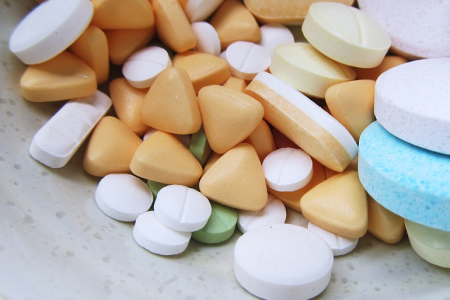Figure 1 presents the general risk increase of using certain drugs, medicines or alcohol (and combinations thereof) in traffic. The risks for drugs and medicines are described below.
 Figure 1. Schematic representation of the traffic risk attached to different drugs, medicines and alcohol (or combinations thereof) expressed in odds ratio’s[i]
Figure 1. Schematic representation of the traffic risk attached to different drugs, medicines and alcohol (or combinations thereof) expressed in odds ratio’s[i]
Drugs
Table 2 shows the crash risk increase after drug use as found in meta-analyses of several effect studies. The highest risk increase, at least five times higher than for driving without drugs, is found for amphetamine use, simultaneous use of multiple drugs, and for combining alcohol and drugs. Use of benzodiazepines, cocaine and opiates also involves a higher crash risk (about one and a half to three times higher).
|
Drug |
Crash severity |
Risk increase (expressed in odds ratiosi) |
95% confidence interval |
|
Amphetamines |
Fatal [23] |
5,2 |
(2,6 - 10,4) |
|
|
Injuries [23] |
6,2 |
(3,5 - 11,1) |
|
Cannabis |
Fatal [23] |
1,3 |
(0,9 - 1,8) Not significant |
|
|
Injuries [23] |
1,1 |
(0,9 - 1,4) Not significant |
|
|
Fatal and injuries [24] |
1,4 |
(1,1 - 1,6) |
|
|
Fatal and injuries [25] |
2,5 |
(1,7 - 3,7) |
|
|
Fatal and injuries [26] |
1,3 |
(1,2 - 1,4) |
|
Cocaine |
Fatal [23] |
3,0 |
(1,2 - 7,4) |
|
|
Injuries [23] |
1,7 |
(0,9 - 3,0) |
|
Opiates |
Fatal [23] |
1,7 |
(1,0 - 2,8) |
|
|
Injuries [23] |
1,9 |
(1,5 - 2,4) |
|
Multiple drugs |
Crashes [27] |
5 - 30 |
- |
|
Combination alcohol and drugs |
Crashes [27] |
20 - 200 |
- |
Table 2. Traffic risk increase caused by driving under the influence of drugs: results from meta-analysis (figures rounded to the nearest decimal).
Table 2 shows that several meta-analyses have been carried out on the risk increase related to driving under the influence of cannabis. The estimates in these meta-analyses vary from a less than one and a half times increased risk [23] [24] [26] to an approximate two and a half times increased risk [25]. According to Rogeberg and Elvik [24], the higher risk estimates are mainly found in studies characterised by a lower-quality research methodology and by limited control of confounders (unmeasured variables), among which use of a cannabis-alcohol combination.
Risk figures about some newly emerging drugs, such as laughing gas (nitrous oxide), are still unavailable. Laughing gas is used as a sedative in (minor) surgery. Studies show that the effect of laughing gas on fitness to drive is short-lived [28] [29]. Recent studies give rise to concerns about serious impairment of health and behaviour in case of chronic and/or intensive use [30] [31]. Moreover, the short-lived effect of laughing gas does give rise to concern when people use laughing gas while driving. According to Trojan et al. [32], laughing gas impairs the psychomotor skills relevant to driving. In this study, half of the participants were again completely attentive eight minutes after dosing had been discontinued, although some participants had not completely recovered after thirty minutes. During the first half hour after dosing, laughing gas may therefore have a negative effect on fitness to drive.
In December 2019, the Dutch Cabinet announced that it was working on a ban on recreational laughing gas [33]. Laughing gas is expected to be included in list II of the Opium Act. This decision followed a 2019 report of the Coordination Point Assessment and Monitoring new drugs (CAM) on the health risk concerning laughing gas [34].
Medicines
The risk[i] associated with medicines depends on the type of medicine, but increases when driving under the influence of medicines such as benzodiazepines, antidepressants and opiates (see Table 3 and [20] [23] ).
|
Medicines |
Crash category |
Risk increase (expressed in odds ratiosi) |
95% confidence interval |
|
Antidepressants [23] |
Injury crashes |
1,3 |
1,1 - 1,6 |
|
Antihistamines [23] |
Injury crashes |
1,1 |
1,0 - 1,2 |
|
Barbiturates [20] |
Crashes motorised |
7,5 |
2,3 - 23,9 |
|
Benzodiazepines [23] |
Fatal crashes |
2,3 |
1,6 - 3,3 |
|
Benzodiazepines [23] |
Injury crashes |
1,2 |
1,1 - 1,3 |
|
Narcotics (strong painkillers) [20] |
Crashes motorised |
2,2 |
2,0 - 2,5 |
|
Analgesics (mild painkillers) [23] |
Injury crashes |
1,0 (none) |
0,9 - 1,1 (Not significant) |
|
Opiates [35] |
Crashes motorised |
2,3 |
1,69 - 3,5 |
Table 3. Risk increase of several medicine groups, expressed as odds ratios in different studies[i] all odds ratios are statistically significant unless stated otherwise (figures rounded to the nearest decimal).
The figures in Table 3 only concern some of many medicine groups.
The Dutch websites rijveiligmetmedicijnen.nl and apotheek.nl keep and update a register of all medicines that pose a risk to driving. Within medicine groups, risks for individual medicines may vary [36] and composition and effect of medicines sometimes change.
[i] Here, the risk associated with medicines is expressed in odds ratios. Formally speaking, odds ratios do not equal risk increases (crashes * exposure), but they are usually interpreted as such.
